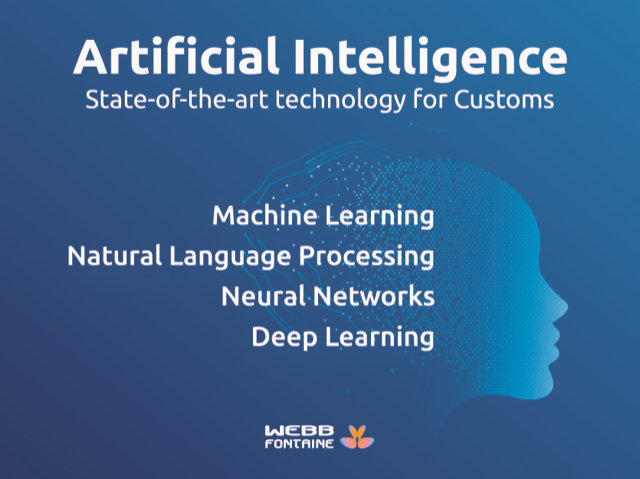Dubai Customs uses artificial intelligence to boost productivity
22 October 2019
By Dubai CustomsImproving workplace productivity and helping people get their jobs done efficiently is critical for Customs administrations that have to deal with an increase in the number of cross-border movements, be it cargo or people.
With a forecasted growth in trade and travel being driven by EXPO 2020, Dubai Customs decided, in 2018, to leverage artificial intelligence (AI), using it to develop a tool that would enable it to observe work data and employee behavior as a means of identifying ways to reduce the time required to undertake a task while improving quality and maximizing staff productivity.
About the tool
Called the Productivity Engine, its features include:
- a calculator to measure the “ideal time” for a task to be completed, the ideal time being defined after analysing three years of data and continually adjusting it – the system can calculate the time required for each of the existing 7,400 task combinations and determine whether employees stay within the time limit;
- a time-stamped data analysis tool that enables individual and collective work patterns to be defined, as well as efficiency and productivity rates;
- a productivity predictor;
- leadership nudges (a nudge is an indirect suggestion or subtle reminder intended to influence people’s behaviour);
- a time tracker that highlights productive and unaccounted time, and which notifies decision makers of productivity scores for each department and employee.
The system acts like a tiny coach sitting on a manager’s shoulder throughout the day. And every now and then, the coach whispers something like, “this person did something great recently,” or “this process could be improved.”
The Productivity Engine produces a productivity score from four indicators:
- Ideal Time Adherence: The average time taken to complete a task or a combination of tasks is calculated. The higher the adherence time, the closest it is to the ideal time.
- Task Consistency: Determines if employees work in the same way each time or if their patterns change often. Higher consistency means a lower variability in the way that employees work, which means that they can be relied upon to perform predictably.
- Quality Impact: The question here is “Does an employee’s work quality cause others to work more or less?” The objective is to ensure that adherence to the ideal time is not achieved at the expense of quality, which could negatively impact productivity further down the line.
- Capacity Utilization: “How much time in a day do employees work at the ideal time pace?” A lack of adherence to the ideal time negatively impacts the indicator, and could leave one with the impression that employees may not be using the time allocated efficiently.
The impact of bringing AI in to help with management functions is transformative. When having to assess the performance of an employee, managers can rely not only on their own personal experience and knowledge of the person, but also refer to the measurements given by the tool. They can also predict, with higher accuracy, what a task involves in terms of human resources.
Development process
To develop the tool, a specific team was put in place to work on a methodology and launch staff awareness-raising activities. It was first necessary to understand what productivity means for Dubai Customs, to identifying the output measures for various processes, and ensuring that Customs managers adhere to productivity outputs and drivers.
“Productivity Disruption Labs” were set up with the active participation of employees to identify opportunities for productivity increases and quick wins. Internal and external data were analysed to develop productivity benchmarks, and algorithms were built and tested to build the Productivity Engine.
Lastly, an application to be used by managers within the organization was built to enable them to easily access the Productivity Engine dashboard.
First outputs
Thanks to the collected data and knowledge gained, Dubai Customs has initiated several projects that directly impact the productivity of the organization. For example, it was able to identify and automate an action occurring 468,000 times per year and requiring 3000 hours. As a result, customer service was improved, and employee happiness increased as they were relieved from a repetitive and dull task.
Moreover, a Trade Support Committee was created with the mission to increase the volume of trade coming through Dubai by engaging with multinational corporations to solve any supply chain challenges that they might face. The work of the Committee resulted in an increase in throughput at Dubai’s ports.
Expectations
In 2017, Dubai Customs conducted a productivity study, which highlighted that between 2010 and 2012 it had experienced impressive productivity growth attributed to the launch of a modern e-clearance system called Mirsal 2. Growth slowed down in the following years, reaching 1.7% in 2016. Thanks to the Productivity Engine, Dubai Customs is determined to boost its productivity again.
To handle the expected increase in movements of people and cargo driven by Expo 2020, without having to hire additional personnel, Dubai Customs needs to grow its productivity by 15% in both 2019 and 2020. Using the Productivity Engine, Customs expects to grow its productivity by 32.5% and save 1.3 million work hours annually.
More information
www.dubaicustoms.gov.ae

